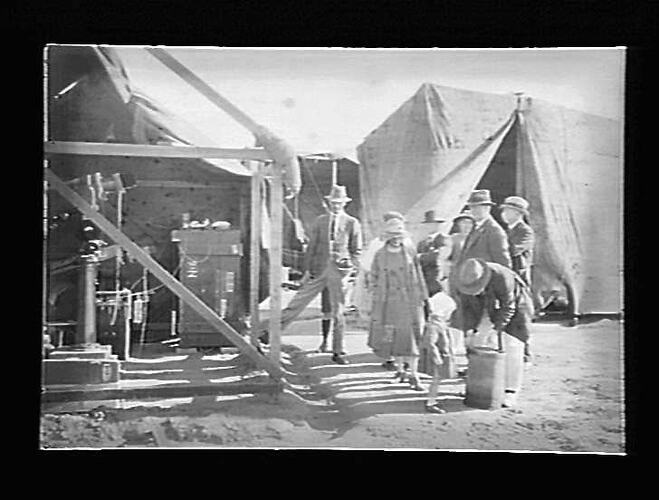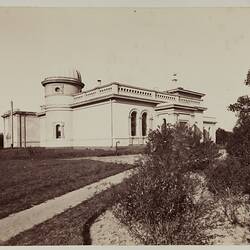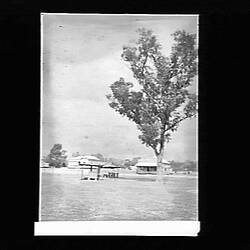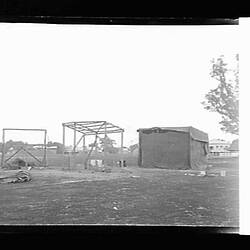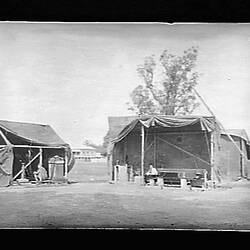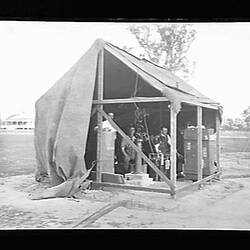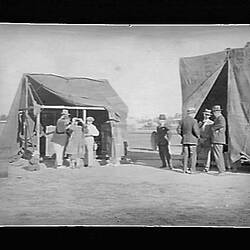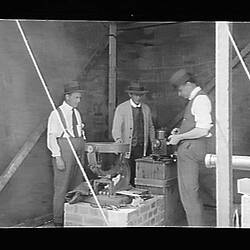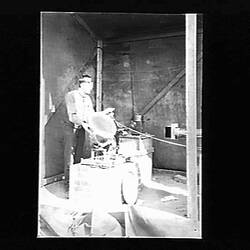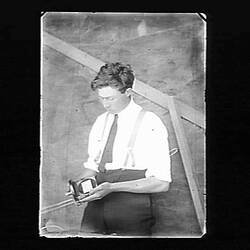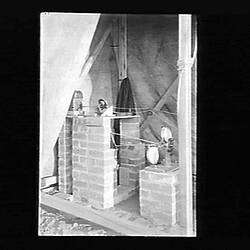Expeditions involved a huge amount of planning and training to take full advantage of the brief minutes of the eclipse. In 1910, astronomers from the Melbourne, Sydney and Adelaide observatories and universities, led by the Victorian government astronomer, Pietro Baracchi travelled to Bruny Island off Tasmania to observe a solar eclipse. Melbourne Observatory shipped down 80 boxes of equipment and portable buildings, and other equipment came from Britain. A special telegraph line was erected from Bruny Island to Hobart, so that telegraphic communication could be maintained constantly with the Melbourne Observatory; this enabled the expedition team to exchange clock beats with the Observatory clocks and thereby accurately determine the longitude of the expedition site.
At the moment of the eclipse, 27 people stood by the equipment, each trained in their special tasks during the course of the eclipse. But the weather remained completely overcast, and it rained gently throughout the 3 minutes of the total eclipse. The astronomers could do nothing but idly watch, pack up their equipment, and sail home.
A similar expedition to the Tongan Islands in the Pacific the following year was slightly more successful. Organised by the Australian Association for the Advancement of Science, the expedition was led by Baracchi, and the astronomers were able to take some photographs through the passing clouds.
In 1922, Observatory staff participated in solar eclipse expeditions with a special purpose - to test Einstein's general theory of relativity. Einstein's theory predicted that the light travelling to us from stars should bend as it passed the Sun, due to the curvature in space-time created by the massive object. A solar eclipse expedition in 1919 had found such a bending of the light, but in 1922 it was still important to undertake confirming observations. Victorian Government Astronomer Joseph Baldwin led a Melbourne expedition to Goondiwindi, Queensland, joining with another group from Sydney Observatory. This time it was the equipment rather than the weather that was uncooperative, and they failed to take sufficiently precise photographs. However, Mr Hoskings, a Melbourne Observatory astronomer, had joined the American Lick Observatory's group at Wallal, Queensland, and they succeeded in making observations that confirmed Einstein's theory.
More Information
-
Keywords
-
Authors
-
Article types
